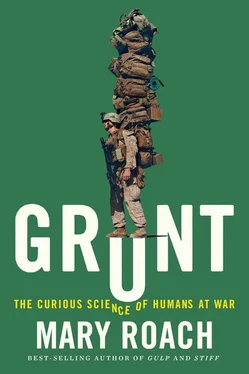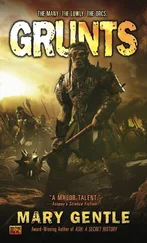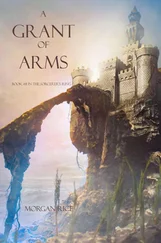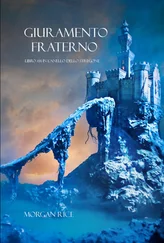A chemical engineering firm out of Cambridge, Massachusetts, was brought on board to develop the formula. The Arthur D. Little Company put their top odor and flavor man—their “Million Dollar Nose”—on the job. Ernest Crocker rose to the challenge like the reek off a landfill on a summer’s noon. “A stink among odors may be compared to a weed among plants,… a plant out of place, such as a potato in a flower garden,” he wrote in a background memorandum. In other words, context is key. [46] For years, the most-requested scent at eclectic fragrance firm Demeter was newborn baby’s head. So they isolated and synthesized it. (Weird? Not for Demeter. Their line also includes Laundromat, Mildew, Paint, Play-Doh, Dirt, and Pruning Shears.) Baby’s Head did not test well. Outside the context of a baby, it turns out, newborn scalp odor isn’t well liked. The firm added baby powder and citrus notes and changed the name to New Baby. Baby’s Head perhaps making some people uncomfortable, what with Pruning Shears right next door.
At an Italian deli counter, a whiff of butyric acid reads as parmesan cheese; elsewhere, vomit. Likewise, the odor of trimethylamine can be described as fishy or vaginal—as Crocker coyly put it, “pleasant or unpleasant according to circumstances.” Very few smells can be classed by their very nature, regardless of context, as repulsive. These were the ones the OSS needed: the “stink-makers.”
The main active ingredient of the Brits’ “S liquid” was skatole, an intensely fecal-smelling [47] In highly dilute form, skatole adds a flowery note to perfumes and artificial raspberry and vanilla flavors. This I learned from HMDB, the Human Metabolome Database, which I consult the way normal people consult IMDb.
compound produced by gut bacteria as they break down meat. Thus wrote Crocker in a second memo, breezily entitled “Facts about Feces.” Acids from digested carbohydrates, he went on, yield the sour notes of flatus. Trace amounts of hydrogen sulfide provide the telltale rotten egg stench. And so on. The takeaway being that it’s no simple task to make a man smell like shit. The smell of human feces is, like any in nature, staggeringly complex, comprising dozens if not hundreds of chemical compounds. (This is why novelty “fart sprays” smell abominable but not especially like farts.) A high-fidelity simulant would be a daunting and costly prospect.
And, Crocker felt, not optimally effective. “In general,” he wrote, “a mixture is best for it bewilders.” Olfaction, like taste, is a sensory security guard, an early detection system for chemicals that might be harmful. If you don’t recognize the smell, you can’t know that it’s safe. Over the millennia, humans who played it safe and backed away from strange smells were more likely to survive to pass on their genes. Thus an unidentifiable foul smell is a more potent weapon than one that is merely foul.
The more typical military application for “malodorants”—as modern olfactory nonlethal weapons are known—has been “terrain denial”: keeping (or getting) people out of a targeted piece of real estate: a Viet Cong tunnel, a terrorist hide, a weapons cache. Almost always, these have been cocktails of odors. In its “evil-smelling substances” memo, the SOE described tiny glass stench ampules distributed to resistance groups to be dropped on the carpet in known Nazi meeting places. The officers would unknowingly crush them with their showy black lion-tamer boots, and an unplaceable, rank sulfur-plus-ammonia stench would fill—and then empty—the room.
Our man Crocker got to work. He set up in-house “organoleptic testing” sessions to gauge the effectiveness of dozens of heinous blends. Organoleptic means “involving the sense organs.” It means you didn’t want to be employed at Arthur D. Little in the later months of 1943. Crocker eventually settled on a blend of skatole; butyric, valeric, and caproic acids; and a mercaptan: shit, vomit, smelly feet, goat, and rotten egg. Samples were prepared and delivered to the NDRC in two formats: a more intense “paste-form stink,” for smearing, and a liquid stink in a squirtable two-ounce lead tube. Crocker assured his clients that the latter would render a target “highly objectionable for not less than two hours at 70 F.” He promised nothing short of “complete ostracism,” concluding his report with a tagline surely unique in the annals of marketing: “as lastingly disagreeable as a product of this kind can be.”
PAM DALTON has a bottle of Who, Me? in her lab. Dalton works at the Monell Chemical Senses Center, an independent nonprofit with ties to the nearby University of Pennsylvania and a long history of Defense Department–funded malodor research and a four-foot-tall bronze nose out in front. I first met her in 1997, when she was serving as an expert witness in a pig farm lawsuit. She was the saucy redhead happily walking the fence lines, sampling fumes with a handheld electronic nose. She has a few more laugh lines now, but her hair is still red and she still loves her work.
The Dalton Lab has no detectable smell, though there are many things in here that stink. On a shelf over our heads is a box of firefighter underarm odor, each subject’s contribution sealed in a Ziploc bag. Where other refrigerators would hold ketchup and salad dressing, Dalton’s has a bottle of civetone, a synthetic version of the anal scent gland secretions of the civet cat. The weapons-grade smells are over beneath the fume hood. The Who, Me?, which tends to cause panic if it gets into the building’s ventilation system, has been bottled, taped, double-bagged, and entombed in a small, reclosable can.
Dalton Lab manager Christopher Mauté unwraps it for me. Mauté has high cheekbones, an aquiline nose, and glossy dark hair that sweeps back from his romantic-lead hairline seemingly without the help of product. Underneath he is all science. He is, by his own description, the guy who smells the roses at the wedding reception and says, “Mmm, phenylethyl alcohol.” Mauté holds the opened bottle near my face, although doesn’t relinquish his grip on it. If I drop the Who, Me? all of Monell West becomes, as Ernest Crocker liked to say, highly objectionable.
A tentative sniff confirms that it is awful, but it’s not what I had expected. This particular version landed far afield of Lovell’s original diarrheal objective. Dalton just returned from the Milpitas, California, dump, and the smell takes her straight back there. It’s sulfury, but not in a jokey-farty rotten egg way. It’s got a meaner, spikier disposition.
Mauté recaps the Who, Me? and reaches under the hood for another bottle. A hand-printed label says Stench Soup and, in larger letters, DO NOT OPEN. In 1998, the Joint Nonlethal Weapons Directorate commissioned Monell to develop a superlative malodorant for clearing buildings or benignly dispersing a violent mob. Stench Soup is what Dalton’s team came up with.
Mauté holds the cap in front of my face. Dalton takes two steps backward, anticipating the moment when the smell climbs from its hole. It’s bad, gag-bad. It’s Satan on a throne of rotting onions. Mauté quickly closes it and puts the container back.
“Put the hood down,” Dalton says, calmly but firmly. And then, less calmly: “PUT THE HOOD DOWN.”
It seems like a good time to go out and get some lunch. I follow the pair to a nearby oyster house to hear the story of how the world’s most objectionable smell, the mixture known as Stench Soup, came to be.
It began with a confection called US Government Standard Bathroom Malodor. (The government being the developer of the smell, not its natural source.) The smell was developed during World War II as part of an effort to create a compound for deodorizing field latrines. I have seen old photographs of these: the row of grinning GIs, naked rear ends slung over a log fence rail erected above a pit. To test the various deodorizers they concocted, Army chemists needed to re-create the stench in the lab. It was apparently unique. “Open field latrines used by hundreds of men over an extended time, often in sweltering heat, don’t resemble very well what occurs in a typical residential bathroom,” says Michael Calandra, of the flavor and fragrance company Firmenich. Firmenich has an entire “library” of malodors available to industry for testing cleaning products and deodorizers.
Читать дальше












